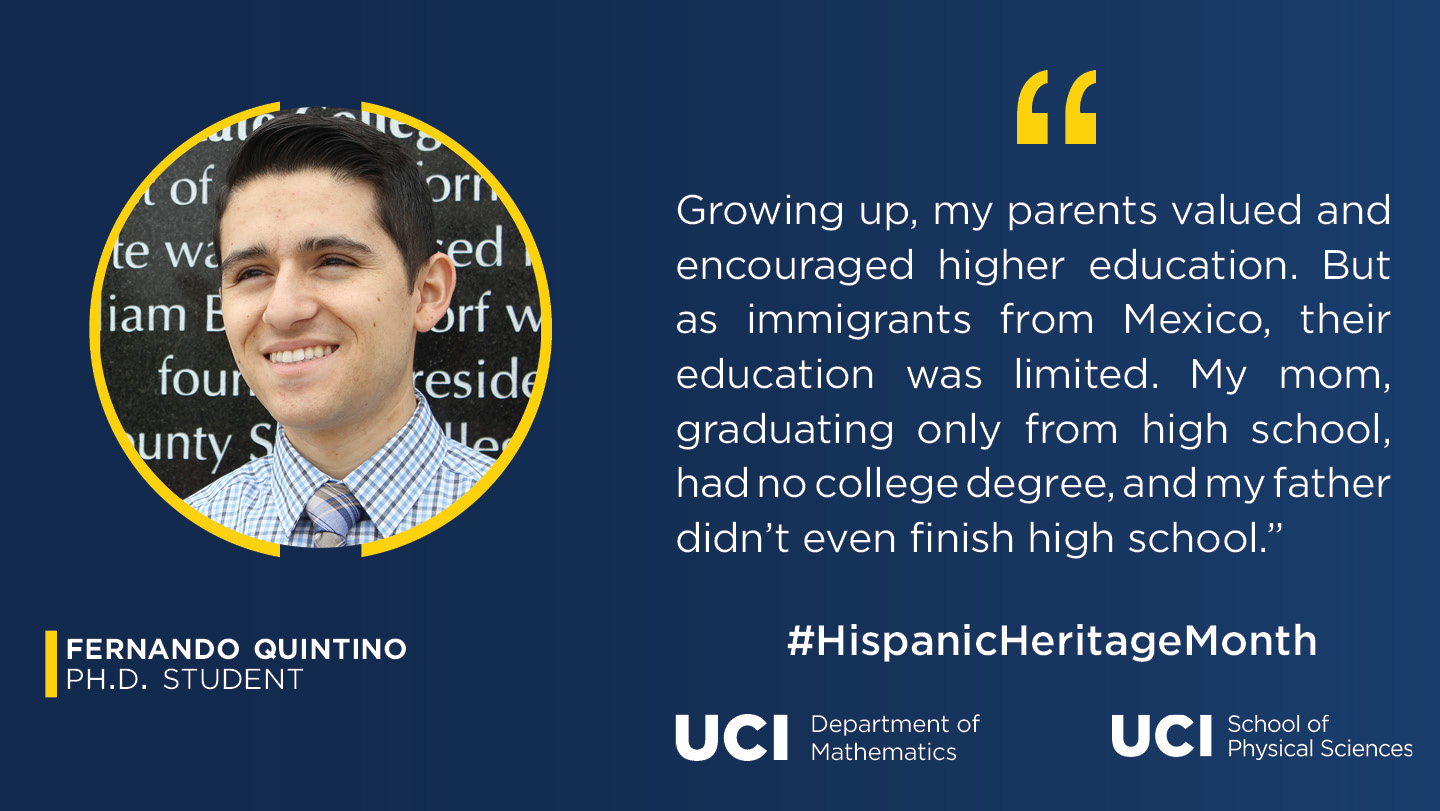HISPANIC HERITAGE MONTH AT PHYSICAL SCIENCES

It’s Hispanic Heritage Month, which means from now until October 15th, we’ll be shining lights on the Hispanic and Latinx members of the School of Physical Sciences community, who themselves cast new light onto the many-varied fields they study. They’re casting light on the Amazon rainforest, where they’re trying to characterize the different types of wildfire that spread through the rainforest, and where they’re trying to understand how, if enough trees die in the rainforest due to climate change-driven droughts, the rainforest’s ecosystems will collapse. And beyond this planet, they’re studying why some galaxies stop creating new stars, and they’re working to measure the distribution of metals in those galaxies. Whether Earth-bound or star-bound, or whether they work behind the scenes making sure the rest of the Physical Sciences community hears their stories, our Hispanic and Latinx scientists and staff make our School hum.
Fernando Quintino, Ph.D. student, Department of Mathematics
PS: Tell us about yourself and your research.
FQ: Growing up, my parents valued and encouraged higher education. But as immigrants from Mexico, their education was limited. My mom, graduating only from high school, had no college degree, and my father didn’t even finish high school. Pursuing a college education with limited support seemed only a dream. After graduating from high school, I was unable to afford the tuition at a university, so I enrolled at Saddleback Community College and got a job to cover the costs of college. I was able to balance school and work for the first few years of my college education, earning a B average. To be honest, I didn’t think I was going to graduate, but I kept taking classes because I didn’t know how to tell my parents that college wasn’t for me. When I met my future wife, however, I realized that I needed to be able to support us, and that meant that I either had to quit college or I needed to finish college — which seemed impossible.
After talking to my counselor, she told me that I had enough credits and was ready to transfer to a four-year university. I began attending California State University, Fullerton (CSUF) with the plan of becoming a high school mathematics teacher because math had always come naturally to me. But after taking intense upper division courses in mathematics, my dreams changed. When I saw why mathematics works and understood what it takes to make a mathematical statement, I knew that I wanted to go to graduate school. But getting to graduate school was not an easy path. Because of my grades in my community college, I couldn’t afford to get anything lower than a B+ in the rest of my classes. Throughout my remaining years at CSUF, I took some of the most difficult math classes of my undergraduate career while still holding a part-time job to pay for school. What motivated me was my wife. I saw how much time she put in her schoolwork, and I decided to do the same. In the end, I graduated with my B.A. in mathematics, but my GPA was such that I was not able to enter a Ph.D. program directly. To pursue my career goals, I knew that a Ph.D. was necessary. I decided to apply to master’s programs, and was accepted at UCI where I worked extremely hard to perform at the same level as the Ph.D. student in my year. I passed all three Mathematics qualifying exams and petitioned to transition into the Ph.D. program, and was accepted..
For the last four years I’ve been conducting research in the area of Dynamical Systems and Mathematical Physics. I’m interested in computing the logarithmic capacity of the set of exceptional energies in the parametric version of the Furstenberg theorem on random matrix products that was studied by Victor Kleptsyn and Anton Gorodetski. The set of exceptional energies is a dense G-delta-set. This has led to the study of logarithmic capacity of “uniform” G-delta sets on the interval [0,1], which is a toy model for the set of exceptional energies and the study of “random” G-delta sets, which is a closer model to the set of exceptional energies.
PS: What advice do you have for Hispanic students who are considering a career in STEM?
FQ: My advice is the following: No matter your background, I believe that hard work and dedication will take you a long way. No matter what you choose to do, do a job that you can be proud of. There are things that you can control and things that you cannot control in life. Do your best on what you can control and do not stress on what you cannot control.
